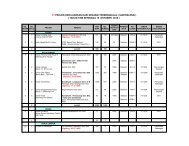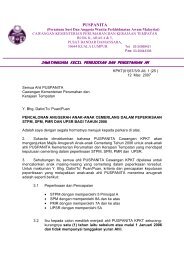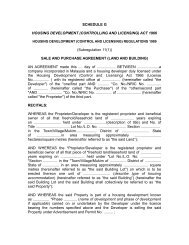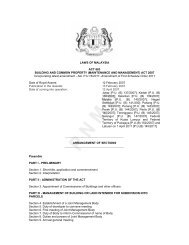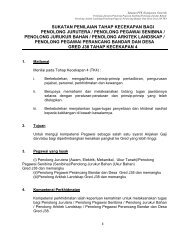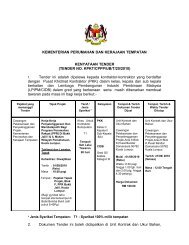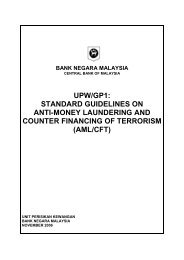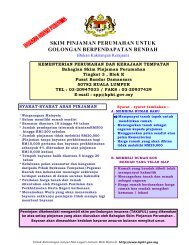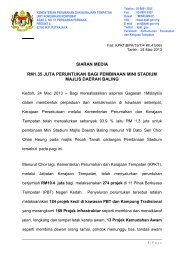National Urbanisation Policy - Ministry of Housing and Local ...
National Urbanisation Policy - Ministry of Housing and Local ...
National Urbanisation Policy - Ministry of Housing and Local ...
You also want an ePaper? Increase the reach of your titles
YUMPU automatically turns print PDFs into web optimized ePapers that Google loves.
<strong>National</strong> <strong>Urbanisation</strong> <strong>Policy</strong>58Thrust 5:CREATION OF A CONDUCIVE LIVEABLEURBAN ENVIRONMENT WITH IDENTITYSociety today is primarily concerned with acomfortable, user-friendly living environmentwith facilities for social interaction, in addition tocreating a sense <strong>of</strong> belonging for its population.This thrust shall emphasize on peaceful urban livingto be equally enjoyed by all urban residents so asto achieve the goal <strong>of</strong> improving solidarity. As theurban population increases, the urban environmentshould be planned <strong>and</strong> managed as a more attractiveplace for living, working <strong>and</strong> recreation.To create a liveable urban environment, it is vitalthat sufficient basic facilities such as housing beprovided, particularly for the low-income group <strong>and</strong>foreign workers. Programmes for low-cost housingshould be undertaken in urban areas in order toprovide adequate <strong>and</strong> affordable housing for thelow-income group as well as to resettle squatters.<strong>Housing</strong> should be located close to the place <strong>of</strong> workwith good accessibility to public transport <strong>and</strong> publicamenities. <strong>Housing</strong> for foreign workers should beplanned at specific locations for the convenience<strong>of</strong> the residents <strong>and</strong> reduce problems for theurban environment.Major public amenities such as schools, recreationalareas, sports complex, places <strong>of</strong> worship, healthfacilities <strong>and</strong> cemeteries should be adequatelyprovided at suitable locations for use by all groups<strong>of</strong> the urban population. Nonetheless, the high value<strong>of</strong> urban l<strong>and</strong> reduces the opportunity to provideadequate amenities at certain areas. Thus, it issuggested that a number <strong>of</strong> public amenities beprovided on a shared basis among several townsor local authorities, for instance, the provision<strong>of</strong> cemeteries.The level <strong>of</strong> provision for public amenities shouldbe based on the hierarchy <strong>of</strong> a town so thatappropriate facilities may be provided. For the mainconurbations, such provisions should considerthe needs <strong>of</strong> the business community that requirevarious facilities <strong>of</strong> higher quality.The maintenance <strong>of</strong> public amenities should be givenemphasis to ensure that they could be effectivelyutilised. In this context, community involvementshould be promoted to reduce costs borne by thegovernment to provide <strong>and</strong> maintain these facilities.A culture <strong>of</strong> maintenance needs to be introducedthrough awareness programmes for the residents.




